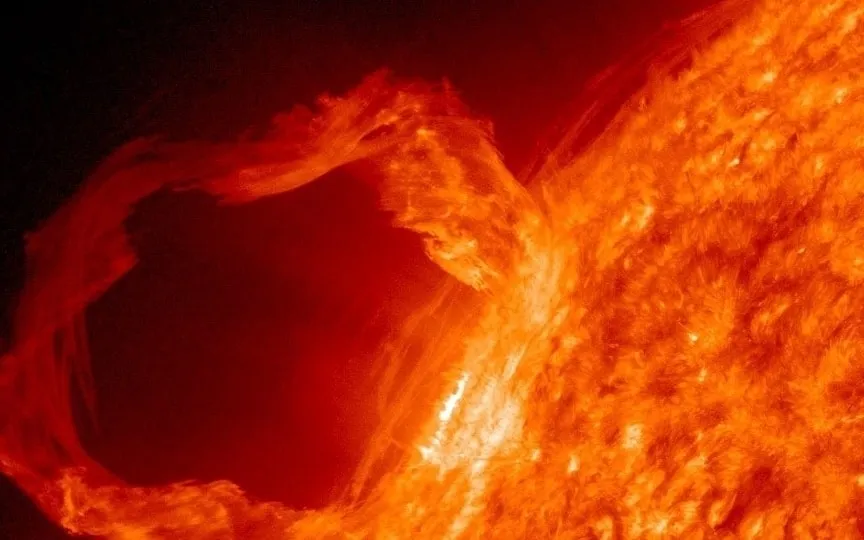NOAA warns of potential geomagnetic storm as CME approaches Earth from solar storm
Following the Vernal Equinox, solar activity remains high as we near the peak of solar cycle 25. NASA predicts that this increase in activity could lead to more frequent and intense solar phenomena such as solar particles, CMEs, solar flares, solar storms, and geomagnetic storms. Forecasters are now warning of an upcoming CME that is expected to impact Earth, potentially causing a geomagnetic storm. Stay informed about this solar storm alert.
Solar storm warning
According to a Space Weather report, National Oceanic and Atmospheric Administration (NOAA) forecasters say the CME is predicted to hit the Earth’s magnetic field today, April 18. This can cause a G1 class geomagnetic storm. The CME is predicted to be weak, but could still lead to a geomagnetic storm.
The report states: “NOAA forecasters say a G1 geomagnetic storm is possible on April 18, when the CME is expected to hit the Earth’s magnetic field. It’s a weak CME, probably not very strong, but even a weak CME can spark the aurora borealis. Similar The CME hit Earth on April 15th and the results were beautiful.
Are G1 geomagnetic storms harmful?
According to NASA, G1 geomagnetic storms are considered minor storms and are unlikely to cause major damage. Although these storms are not strong enough to damage satellites or disrupt cell phone networks, geomagnetic storms can still disrupt the shortwave radio network and cause power outages.
However, if a geomagnetic storm is strong enough, it can cause more damage than Auroras alone. They can damage small satellites, affect cellular networks and GPS, and even pose a threat to ground-based electronics and power grids by vastly increasing the magnetic potential.




